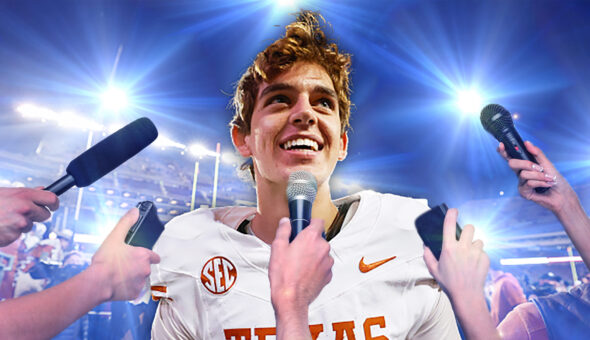Imagine a university lecture hall of 200 students in which a single professor gives every student a personalized lesson plan based entirely on individual strengths and learning style: a unique syllabus tailored to each student that offers the absolute best possible chance for them to succeed in the class.
Now imagine that instead of a small handful of major-milestone exams — like the midterm, a few homework assignments, a term project and the final exam — the class offers continuous assessments of students’ performance throughout the semester, complete with personalized feedback based on their learning strengths.
Higher-ed has dreamed of and slowly crawled toward such an ideal for the past 20 years — mostly in the name of accessibility and social equity. But schools could only do so much with finite budgets, manpower and hours in a day.
Yet artificial intelligence, particularly the AI boom of the past 12 months, has changed everything. Interviewed scholars at the cutting edge of this fast-growing technology say the coming years will make the personalized student learning experience a reality, speeding up a decades-long process in just months.
AI Already “Permeates Everything”
David Bader taught at Georgia Tech’s School of Computational Engineering before moving to the New Jersey Institute of Technology, where he founded the school’s department of data science in 2019. Bader also oversees NJIT’s data science programs for its bachelor’s, master’s and doctoral degrees.
“We teach AI and use it within our curriculum,” he said. “AI permeates everything we do here.”
Even in some of his department’s most analytical and technical courses, Bader says students take vastly different approaches to interpreting class material.
Before AI, most NJIT computer science professors would teach cut-and-dry, “straightforward statements” for writing algorithms and coding. The new tech opened the door wider for more visually inclined learners, hands-on learners and even students with disabilities to understand class material better.
“Some students are very good essentially at having a manual regurgitated to them and learning it in that style,” Bader explained. “But a visual learner may want to see that information flow-charted and see how things connect together, and we can more easily provide that with AI.”
“Additionally, a student who is more hands-on, an active learner, may want to type in the lesson materials and run them during the class to figure out how they work, rather than just learning from statements on the board,” he added. “Instead of doing separate activities in the classroom, each student can now have lectures tailored toward their best way of learning how to program.”
As an alternative to traditional lesson plans made exclusively of standardized tests, courses, textbooks and materials, Bader said his department took “bold steps” into AI to avoid creating students that are all “puppies or clones of each other.” Large language models, such as ChatGPT, and generative AI, such as DALL-E that creates fanciful images from descriptive prompts, have already offered promising returns.
AI Facilitates Out-of-Class Assistance
Although AI in individualized lesson planning is still in a nascent stage, the technology already plays a huge role in tutoring and live help, Bader said. At NJIT, students in certain programs can launch a digital teacher’s assistant to ask questions and have “meaningful conversations” with the click of a button.
“They don’t have to commute to campus, find office hours that work, sit down, and schedule a session with another person,” Bader said. “As they’re doing homework now, they ask a question and get an immediate response.”
At Emory University, computer science chair and professor Vaidy Sunderam has similarly helped lead the rollout of AI for personalized student learning during office hours. Emora Chat, a university-wide AI bot, combines features of contracted mainstream chatbots with a proprietary twist.
Like Bader, Sunderam says the idea of personalized syllabi, coursework and curricula driven by AI is still a work in progress. But it’s already been a godsend for tutoring and office hours, freeing up TAs and professors to deal with more advanced student questions and needs.
“That ability to use AI TAs is phenomenal and revolutionizes the classroom experience,” he said.
Students Offer Mixed Reviews
Some university students who went on the record with Volt said they’ve enjoyed the early returns of AI in the classroom. But most still hadn’t seen their schools implement any significant forms of the new technology.
Christina Forbes, a sophomore coordinate major in computer science at Tulane, said staff and faculty within the program “heavily encourage” students to use AI as a tool. Although Tulane doesn’t yet have its own school-based AI teaching assistant in place, Forbes said she and her classmates regularly use ChatGPT for help with homework, asking the chatbot to diagnose any problems with the code they’ve written.
“It’s like a tutor that you can ask hundreds of questions without annoying it,” she said.
Aaron West, a senior forensic science major at San Jose State University, said his professors have not used AI “in any teaching capacity,” in part because they don’t yet feel any pressing need to implement the technology. West, who was already in his third of four years when the ChatGPT-led AI boom hit late last fall, said the idea of a personalized curriculum based on his learning strengths would have appealed more to him if he’d begun college with that option.
After two years of learning “the traditional way,” a shift to AI-based learning would be “interesting, but probably unnecessary,” West opined. His personal experience with AI includes using a grammar-correction website Grammarly to proofread the occasional essays. But with generative AI, West said he only asked ChatGPT for jokes and restaurant ideas when it first became popular.
“I’m not a huge fan of AI but think everybody will need to be familiar with certain aspects of it at some point,” West said. “I don’t use it, and I haven’t heard of any classmates using it.”
AI-Driven Learning Is Still Growing
So when, exactly, can the average American university student — not just one in a top-ranked computer science program — expect to see AI-driven personalized learning in action? Interviewed scholars said it could take three to five years for most students to notice any differences at all. Some schools, leery of the tech’s reputation as a tool for cheating, may wait for longer or hold off implementing AI tools entirely, to the extent possible.
Bader believes the “authoritarian” model of a teacher having a superior role will gradually take a backseat to AI diagnosing individual students’ learning styles. When AI fills personalized models for each student, those students become in control of their education, he said.
“We’ll be able to customize the learning experience by changing how curriculums are put together,” said Bader. “Right now, we’re just at the start of this AI revolution.
“We’re at the baby phase of just crawling,” he added. “But we’re not yet a toddler walking, let alone a child running.”









